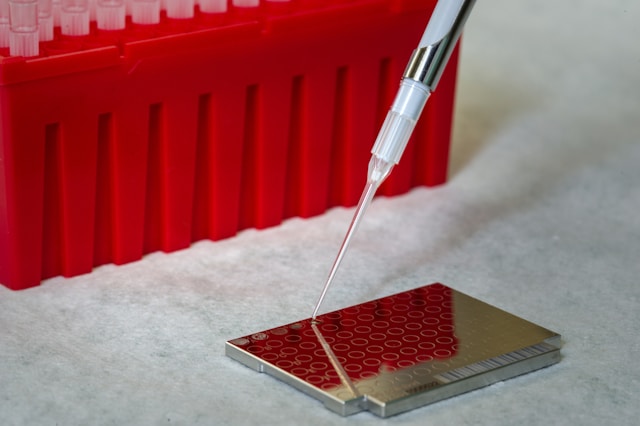A bacterium is a type of microorganism that belongs to the domain Bacteria, which is one of the three domains of life (the others being Archaea and Eukarya).

Bacteria are single-celled, prokaryotic organisms, meaning they do not have a nucleus or other membrane-bound organelles. They are incredibly diverse and can be found in virtually every environment on Earth, from soil and water to extreme environments like hot springs and radioactive waste.
Characteristics of Bacteria
- Cell Structure:
- Cell Wall: Most bacteria have a rigid cell wall that provides shape and protection. The composition of the cell wall varies among different types of bacteria (e.g., Gram-positive and Gram-negative bacteria).
- Plasma Membrane: Inside the cell wall, bacteria have a plasma membrane that controls the movement of substances in and out of the cell.
- Cytoplasm: The interior of a bacterial cell contains cytoplasm, a gel-like substance where cellular processes occur.
- Ribosomes: Bacteria have ribosomes, which are structures responsible for protein synthesis.
- Genetic Material: Bacteria typically have a single circular chromosome located in a region called the nucleoid. They may also have small, circular DNA molecules called plasmids.
- Shapes:
- Cocci: Spherical-shaped bacteria (e.g., Streptococcus).
- Bacilli: Rod-shaped bacteria (e.g., Escherichia coli).
- Spirilla: Spiral or corkscrew-shaped bacteria (e.g., Spirillum).
- Vibrios: Comma-shaped bacteria (e.g., Vibrio cholerae).
- Reproduction:
- Bacteria primarily reproduce asexually through a process called binary fission, where a single cell divides into two identical daughter cells.
- Metabolism:
- Bacteria exhibit diverse metabolic pathways. They can be aerobic (requiring oxygen), anaerobic (not requiring oxygen), or facultative anaerobes (can survive with or without oxygen).
- They can be autotrophic (producing their food through photosynthesis or chemosynthesis) or heterotrophic (obtaining food from external organic sources).
- Mobility:
- Some bacteria are motile and move using structures like flagella, pili, or through gliding mechanisms.
Roles and Impact
- Ecological Importance:
- Decomposers: Bacteria play a crucial role in decomposing organic matter and recycling nutrients in ecosystems.
- Nitrogen Fixation: Certain bacteria convert atmospheric nitrogen into forms usable by plants, which is essential for plant growth.
- Medical and Industrial Importance:
- Pathogens: Some bacteria cause diseases in humans, animals, and plants (e.g., tuberculosis, strep throat).
- Beneficial Bacteria: Many bacteria are beneficial, such as those in the human gut microbiome that aid in digestion and produce vitamins.
- Biotechnology: Bacteria are used in various industrial processes, including fermentation (e.g., in the production of yogurt and antibiotics) and genetic engineering.
Gram Staining
Bacteria are often classified based on their reaction to Gram staining:
- Gram-Positive Bacteria: Have a thick cell wall that retains the crystal violet stain, appearing purple under a microscope.
- Gram-Negative Bacteria: Have a thinner cell wall that does not retain the crystal violet stain but takes up the counterstain (safranin), appearing pink.
Bacteria are essential to life on Earth due to their roles in ecosystems, their contributions to human health and industry, and their significance in scientific research as a Well-known list of Bacterial diseases and cure
Bacterial diseases are illnesses caused by harmful bacteria. These microorganisms can infect various parts of the body and cause a wide range of symptoms and health issues. Here are some common bacterial diseases:
Respiratory Infections
- Tuberculosis (TB): Caused by Mycobacterium tuberculosis, it primarily affects the lungs but can also impact other parts of the body. Symptoms include a persistent cough, fever, night sweats, and weight loss.
- Pneumonia: Often caused by Streptococcus pneumoniae, Haemophilus influenzae, or Mycoplasma pneumoniae, it leads to inflammation of the lungs, causing cough, fever, and difficulty breathing.
- Pertussis (Whooping Cough): Caused by Bordetella pertussis, it is characterized by severe coughing spells that can last for weeks.
Gastrointestinal Infections
- Cholera: Caused by Vibrio cholerae, it leads to severe diarrhea and dehydration. It is typically spread through contaminated water.
- Salmonellosis: Caused by Salmonella species, it results in food poisoning symptoms like diarrhea, fever, and abdominal cramps.
- Escherichia coli (E. coli) Infections: Certain strains, like E. coli O157:H7, can cause severe foodborne illness with symptoms including diarrhea (often bloody), abdominal pain, and vomiting.
Skin and Soft Tissue Infections
- Cellulitis: Caused by Streptococcus or Staphylococcus species, it results in red, swollen, and painful skin, often with fever.
- Impetigo: Caused by Staphylococcus aureus or Streptococcus pyogenes, it leads to red sores that quickly rupture, ooze for a few days, and then form a yellow-brown crust.
- Necrotizing Fasciitis: Often caused by Streptococcus pyogenes (group A strep), it is a rapidly spreading infection that destroys tissues under the skin.
Urinary Tract Infections (UTIs)
- Commonly caused by E. coli, UTIs can cause frequent, painful urination and lower abdominal pain. Severe infections can affect the kidneys, leading to more serious symptoms like fever and back pain.
Sexually Transmitted Infections (STIs)
- Chlamydia: Caused by Chlamydia trachomatis, it often presents with mild or no symptoms but can lead to serious reproductive complications if untreated.
- Gonorrhea: Caused by Neisseria gonorrhoeae, it can cause painful urination and discharge but may also be asymptomatic.
- Syphilis: Caused by Treponema pallidum, it progresses through stages, beginning with sores at the infection site and potentially leading to severe systemic issues if untreated.
Other Notable Bacterial Diseases
- Lyme Disease: Caused by Borrelia burgdorferi, transmitted through tick bites, it can cause fever, headache, fatigue, and a characteristic skin rash.
- Tetanus: Caused by Clostridium tetani, it produces toxins leading to muscle stiffness and spasms.
- Diphtheria: Caused by Corynebacterium diphtheriae, it affects the mucous membranes of the throat and nose, leading to sore throat, fever, and swollen glands.
Prevention and Treatment
Prevention of bacterial diseases involves proper hygiene, vaccination, safe food handling, and avoiding contaminated water and food sources. Treatment typically includes antibiotics, although some bacteria have developed resistance, making certain infections harder to treat. Public health measures, early diagnosis, and appropriate medical care are crucial in managing and preventing bacterial diseases.
Here’s a list of common bacterial diseases and their typical treatments:
1. Tuberculosis (TB)
Caused by: Mycobacterium tuberculosis Symptoms: Persistent cough, chest pain, weight loss, fever, night sweats Treatment: Long-term antibiotic therapy, typically involving a combination of isoniazid, rifampin, ethambutol, and pyrazinamide for several months with Well-known list of Bacterial diseases and cure.
2. Pneumonia
Caused by: Streptococcus pneumoniae, Haemophilus influenzae, Mycoplasma pneumoniae, among others Symptoms: Cough, fever, chills, difficulty breathing Treatment: Antibiotics such as amoxicillin, azithromycin, or doxycycline depending on the specific bacteria.
3. Pertussis (Whooping Cough)
Caused by: Bordetella pertussis Symptoms: Severe coughing spells, whooping sound during breathing Treatment: Antibiotics like azithromycin or erythromycin; supportive care for symptoms.
4. Cholera
Caused by: Vibrio cholerae Symptoms: Severe diarrhea, dehydration, vomiting Treatment: Rehydration solutions (oral or intravenous), antibiotics like doxycycline or azithromycin.
5. Salmonellosis
Caused by: Salmonella species Symptoms: Diarrhea, fever, abdominal cramps Treatment: Often self-limiting; severe cases may require antibiotics like ciprofloxacin or azithromycin.
6. E. coli Infections
Caused by: Pathogenic strains of Escherichia coli (e.g., E. coli O157:H7) Symptoms: Diarrhea (often bloody), abdominal pain, vomiting Treatment: Supportive care; antibiotics are generally not recommended for E. coli O157:H7 due to risk of complications.
7. Cellulitis
Caused by: Streptococcus or Staphylococcus species Symptoms: Red, swollen, and painful skin; fever Treatment: Antibiotics like cephalexin, dicloxacillin, or clindamycin.
8. Impetigo
Caused by: Staphylococcus aureus or Streptococcus pyogenes Symptoms: Red sores that burst and form a yellow-brown crust Treatment: Topical antibiotics like mupirocin; oral antibiotics for more severe cases.
9. Necrotizing Fasciitis Caused by: Streptococcus pyogenes (Group A strep) among others Symptoms: Severe pain, swelling, fever, rapid tissue death Treatment: Immediate intravenous antibiotics (e.g., penicillin, clindamycin); surgical removal of dead tissue.
10. Urinary Tract Infections (UTIs)
Caused by: Commonly E. coli Symptoms: Frequent, painful urination; lower abdominal pain Treatment: Antibiotics like trimethoprim-sulfamethoxazole, nitrofurantoin, or ciprofloxacin.
11. Chlamydia Caused by: Chlamydia trachomatis Symptoms: Often mild or no symptoms; possible discharge, burning during urination Treatment: Antibiotics like azithromycin or doxycycline.
12. Gonorrhea
Caused by: Neisseria gonorrhoeae Symptoms: Painful urination, discharge Treatment: Dual therapy with ceftriaxone and azithromycin.
13. Syphilis
Caused by: Treponema pallidum Symptoms: Sores, rash, fever, muscle aches (progresses through stages) Treatment: Penicillin G injections.
14. Lyme Disease
Caused by: Borrelia burgdorferi (transmitted by tick bites) Symptoms: Fever, headache, fatigue, skin rash (erythema migrans) Treatment: Antibiotics like doxycycline, amoxicillin, or cefuroxime.
15. Tetanus
Caused by: Clostridium tetani Symptoms: Muscle stiffness and spasms Treatment: Immediate administration of tetanus immunoglobulin; antibiotics like metronidazole or penicillin; supportive care.
16. Diphtheria
Caused by: Corynebacterium diphtheriae Symptoms: Sore throat, fever, swollen glands, thick coating in the throat Treatment: Antitoxin administration; antibiotics like penicillin or erythromycin.
The effectiveness of these treatments can depend on various factors, including antibiotic resistance, patient health, and disease severity. It is essential to seek medical advice for proper diagnosis and treatment with a Well-known list of Bacterial diseases and cure




